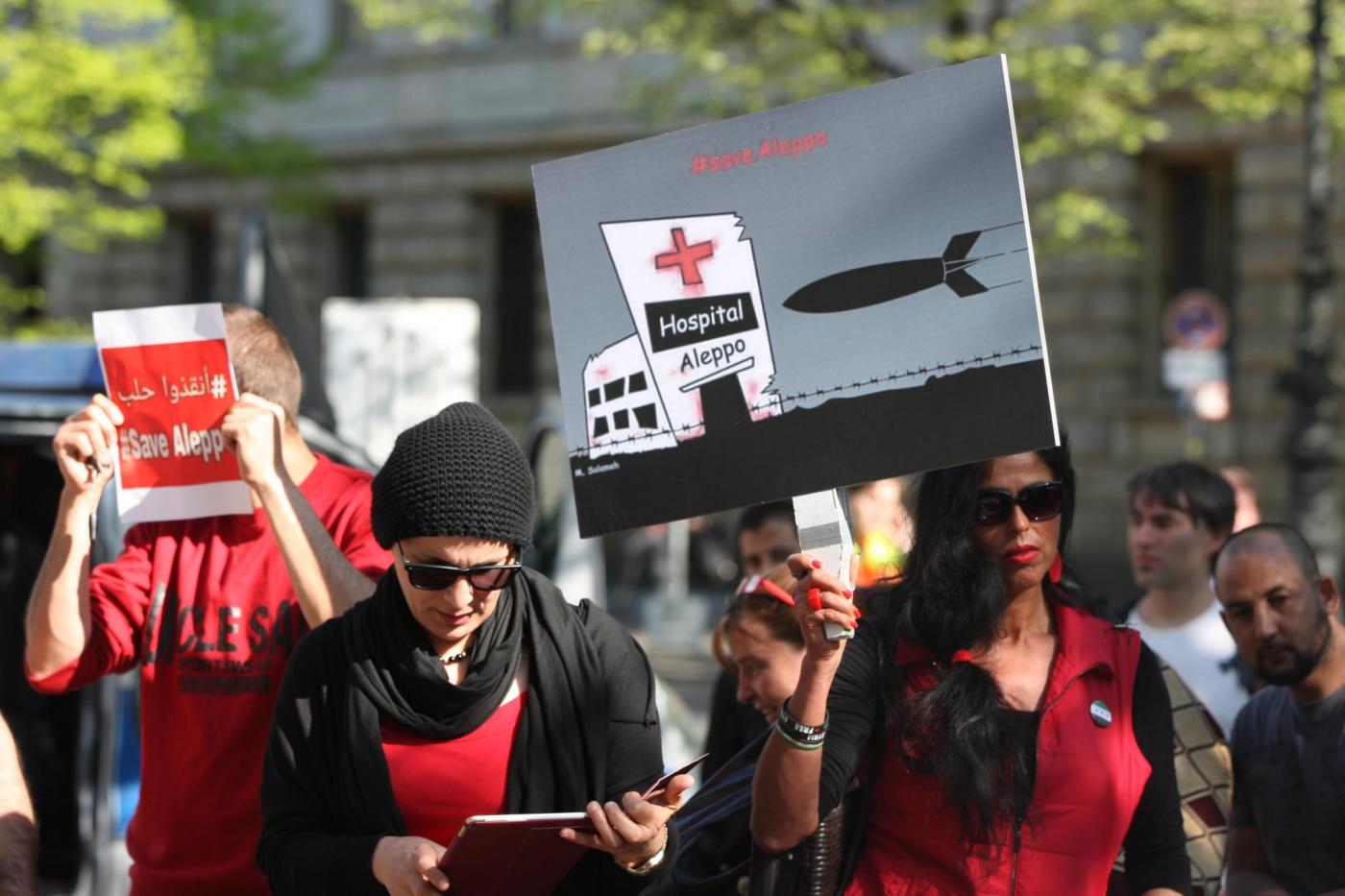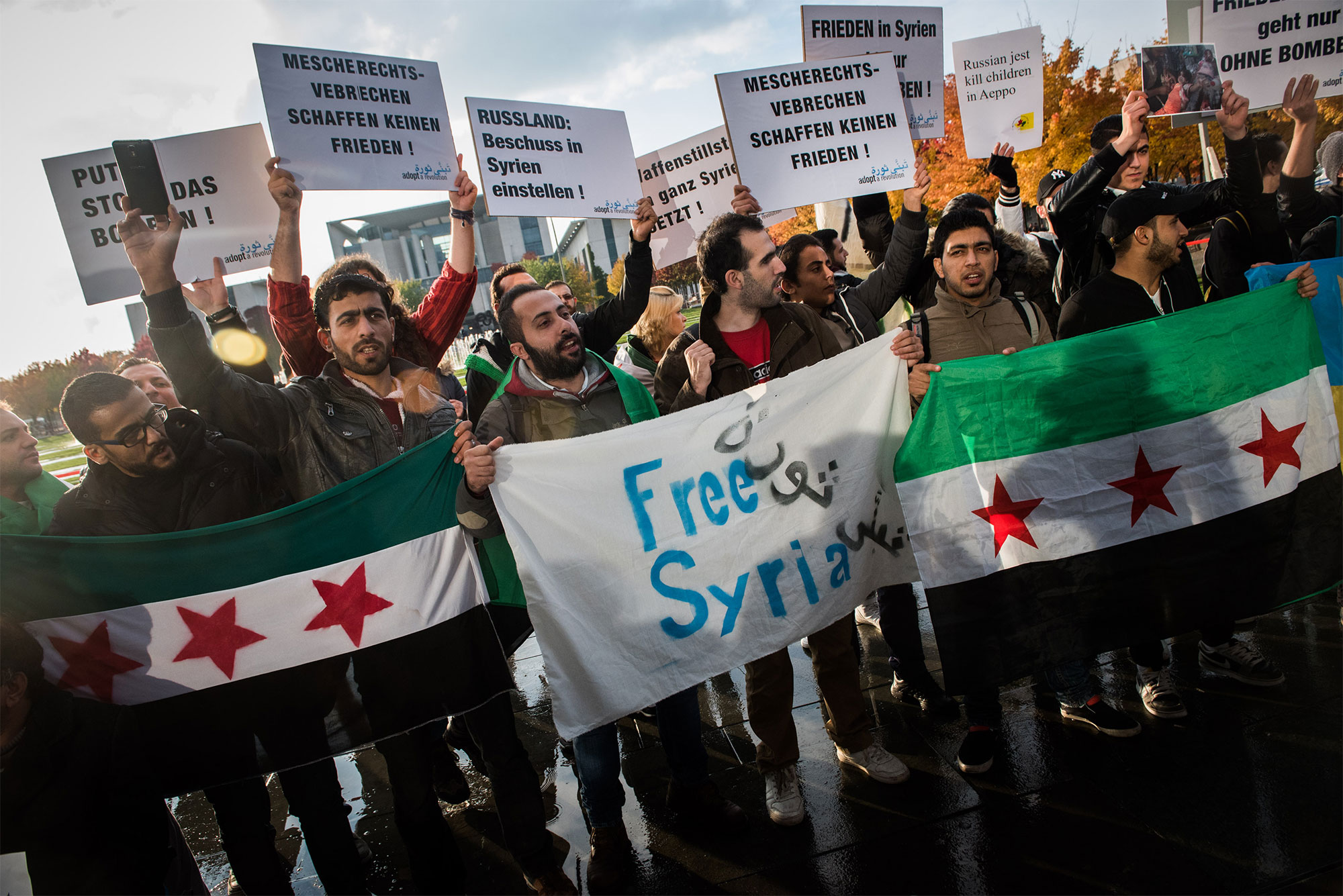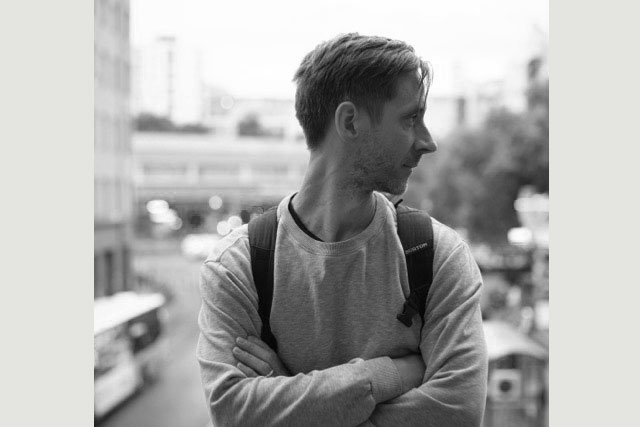When it comes to Syria and Western arms exports, the most dominant voices in the German peace-movement debate are generally those claiming that the meanwhile eight-year conflict is due to the USA and other Western players’ endeavor to overthrow the Assad regime – a “thwarted regime change” is claimed to be the root cause of their project – and to thereby supply arms. This “regime change” narrative is mistaken; and since it hides the fact that the Syrians who take to the streets to protest the Assad regime are not puppets of the CIA but political subjects with legitimate interests, it is also racist. It downplays the extensively documented crimes of the Assad regime, denies or relativizes the responsibility of Russia and Iran for escalation of the conflict, and imputes big plans to the USA and other Western players, despite the evident absence of planning.
EUROPEAN WEAPONS IN THE SYRIAN WAR
A closer look at Western players’ arms exports to the Syrian opposition makes this patently clear. In the period 2013–2017, many tons of small weapons, anti-tank weapons, and grenade and rocket launchers from Europe were delivered to Syria. Several players were involved, in a variety of roles. The weapons were bankrolled primarily by Saudi Arabia, the United Arab Emirates, Qatar, Jordan, and Turkey. The last two states served as hubs from where weapons could be funneled into Syria. The financial backers organized the logistical coordination and distribution of the weapons in cooperation with the CIA, evidently at two locations in Jordan, in the main. The weapons stemmed from Bosnia, Montenegro, and Serbia as well as from the EU states Croatia, Czech Republic, Slovakia, Romania, and Bulgaria. This so-called “Balkan pipeline” was exposed thanks to meticulous investigative research.1 Although the European states’ exports clearly contravened European and international law, they have not yet been put up for political debate. The other EU states have simply turned a blind eye.
Yet the consequences proved catastrophic. The arms exports took place when the Syrian opposition was already splintered and dominated by Islamist groups. Even though the CIA’s coordination efforts were allegedly to ensure that predominantly moderate groups would be armed, the very opposite happened. Owing to the pivotal role of players such as Saudi Arabia as well as to the difficulty of monitoring where weapons end up in the disarray of conflict, the CIA program played a part in making the fundamentalist Islamic militias ultimately the best equipped of all. A CAR report reveals that some of these weapons ended up in roundabout ways in the hands of “Islamic State” – ISIS – among them munitions produced in EU states after 2014.2
Arms supplies to the splintered and in part jihad-oriented opposition contributed to escalation of the conflict and are estimated to have led to the death of circa 100,000 regime-loyal fighters and doubtless also to many civilian losses.3 Nonetheless, the arms supplies failed to effect a successful “regime change.” From 2015 on, the militias equipped and trained by the USA were directed to use their weapons solely against ISIS, but not against the Assad regime. And from the very start the USA prevented the supply of portable anti-aircraft weapons to the Syrian opposition, for fear that these might be used for terror attacks on civil aviation or to shoot down Western fighter jets. The USA and other Western states gave only hesitant support probably because they ultimately feared that the splintered, Islamist-dominated opposition’s victory over Assad might have barely foreseeable consequences.
AN INTEREST IN DEFENSE OF THE CIVILIAN POPULATION?
Critical voices among the Syrian opposition – among them activists who believe it is a mistake to arm the Syrian opposition – have claimed that Western arms supplies were insufficient. Given that the Assad regime has been bombarding civilians in opposition-held areas with barrel bombs and other illegal weapons for the last eight years, many Syrians fail to comprehend why anti-aircraft weapons have not materialized, no-fly zones have not been established, and the defenseless civilian population has to this day been left exposed to the air strikes of the Assad regime and its allies. We need not share the political standpoint of those bombarded to understand this bewilderment.
The vulnerability of the civilian population in the opposition-held areas of Syria has often been paid exasperatingly little attention in the debates of the German peace movement. According to statistics from the Syrian Human Rights Network, over 884 percent of civilian losses have been due to war crimes committed by the Assad regime – many of them to the at least 71,935 barrel bombs,5 i.e. non-guided weapons made from barrels, explosives, and metal fragments, which the regime has been dropping from planes and helicopters since 2012, and continues to drop, in order to terrorize the civilian population. The frequent direct bombardment of hospitals, schools, and markets in this period further underlines the fact that attacks on the civilian population are part of the military strategy of the Assad regime and its Russian allies.6

But even the Assad regime’s repeated use of poison gas7 failed to elicit either empathy with the victims or outrage regarding the perpetrators on the part of the German peace movement, its major concern being still Western intervention – and the menace of subsequent global escalation. Not infrequently, the Assad regime’s poison gas attacks were denied or dismissed as “false flag” operations ¬– as if occasions for Western intervention were lacking. Time after time, the European and US peace movements protested Western interventions under the rallying cry “Hands Off Syria” – entirely as if there were only ever a problem in Syria when Western players intervened. Syrian refugees who fled the repression and bombing of the Assad regime generally find this position incomprehensible.
SWEEP IN FRONT OF OUR OWN DOOR FIRST
In many respects, the peace movement’s focus on Western players is understandable. What do protests achieve if they address themselves to autocrats like Assad or Putin? A Berlin protest march cannot put any political pressure on them. Wouldn’t it make more sense for critical civil society in Germany to concentrate on the politics of its own government and its allies? After all, precisely in relation to Syria there’d be good reason to do so – given that the NATO-partner Turkey has long since been deploying Leopard tanks made in Germany in its interventions in northern Syria, tanks that protect the Turkey-financed militias currently committing serious crimes in north-eastern Syria. And yet not even this sparks much protest.8 Shouldn’t we therefore concentrate on sweeping in front of our own door first?
There are good grounds not to do so. Civilians in Syria are mostly killed by the Assad regime’s arms, most of which come from Russia.9 Also, the Russian Air Force directly targets hospitals and other civilian infrastructure in Syria.10 The Russian arms industry cynically advertises its weapons as having been “successfully tested” in Syria11 – and this even at trade fairs in Europe.12 Despite sanctions against Russia, numerous economic links exist. And they are likely to tighten thanks to the North Stream II pipeline – because the days when two geopolitical blocs were largely hostile to one another, and clearly distinct from one another, are now over. The links even with non-NATO countries are too strong nowadays for us to be able to claim that all this is none of our business.

Such links exist also with Syria. In 2001, the then Federal Chancellor Gerhard Schröder received Bashar al-Assad in Berlin. At the time, the current Federal President Frank-Walter Steinmeier (SPD) was responsible for coordinating Germany’s intelligence services. In the wake of 9/11, Western intelligence agencies worked closely with the torturing intelligence agencies of Syria and other authoritarian regimes.13 For Assad and most other tyrants in the region, the “war on terror” was a welcome means to justify the most brutal repression and to gain recognition in the West. As late as 2011, when the protest movement against Assad was already counting its dead – in Assad’s propaganda, all of his opponents are “terrorists” – Frank-Walter Steinmeier continued to defend cooperation with the Syrian regime. There were economic interests, too. For example, as late as February 2011, a business delegation from Lower Saxony traveled to Syria to do business – at the same time as a minor who had been deported there from Germany was being held in a Syrian torture chamber.14
COOPERATION WITH TYRANTS
Economic cooperation with the Assad regime was nothing new. In the 1980s, over fifty German companies supplied the Assad regime with raw goods for the production of chemical weapons. Their names feature on a list that was compiled by the OPCW (Organization for the Prohibition of Chemical Weapons) but that is kept secret by the federal government – out of concern for the exporters’ economic wellbeing.15
Likewise from 1998 to May 2011, German companies supplied the Assad regime with at least 360 tons of the chemicals required to produce the nerve agent sarin used in chemical warfare. The necessary export permits were granted first, from 1998 on, by the SPD/ Green Party coalition government then, after 2005, by the CDU/ SPD respectively the CDU/ FDP coalitions under Chancellor Angela Merkel. The federal government was well aware that the Assad regime was implementing an extensive chemical weapons program – and should moreover have long since learned its lesson given that the Iraqi chemical weapons with which Saddam Hussein murdered several thousand people were likewise produced with the help of German export goods.
REGIME CHANGE? REGIME SUPPORT IS THE PROBLEM
From the peace movement’s viewpoint, focused as it is on the former Cold War lines of conflict, the problem is not cooperation with the Assad regime, Putin’s Russia, or the Islamist theocracy in Iran, but rather support for the oppressed opposition in Syria. For example, the peace initiative IPPNW (International Physicians for the Prevention of Nuclear War) has long since argued that the Assad regime should be rehabilitated through diplomatic relations and an end to sanctions. For whoever argues for the overthrow of Assad – so its website states – “knowingly hazards an open confrontation between the nuclear powers and thus the risk of a nuclear war that would threaten the whole of humanity. This is one of the reasons why we international physicians for the prevention of nuclear war are committed to a peaceful solution to the Syrian conflict.”16
Then the initiative quickly but belatedly adds that: “Even regardless of the above threat, this war with its 500,000 dead and 12 million refugees must be ended as soon as possible.” Significantly, the victims of this war are of only secondary concern to the IPPNW, its primary concern being “us”. Anyone hoping to prevent a nuclear war that would threaten “us” had therefore best keep quiet when Syrian barrel bombs or Russian rockets kill people in Syria. For were we to help the victims of this war, so the fearful reasoning, we would ultimately put ourselves at risk. Better then, to turn a blind eye to the struggle, to relativize or disavow it, and to lend political weight to the notion that people who defend themselves against their dictators should on no account be given support.
THE PEACE MOVEMENT MUST BECOME A HUMAN RIGHTS MOVEMENT
There is a way to avoid this trap. If we align our moral compass with human rights rather than with geopolitical interests, we quickly reach the conclusion that peace policy should translate into support not for those states that are allegedly victims of “Western imperialism” but for the innocent people who are victims of armed conflict or militarized repression. Numerous organizations are meanwhile demonstrating that this kind of solidarity is possible. For example, the European Center for Constitutional and Human Rights (ECCHR) supports law suits against arms manufacturers whose products are used by Saudi Arabia against civilians in Yemen,17 as well as Syrians who press charges against the Assad regime’s henchmen.18 The research project EUarms19 investigates European arms exports to authoritarian states, regardless of their geopolitical alliances. Amnesty International is investigating war crimes committed by the US-led coalition against ISIS in Raqqa20 as well as crimes against humanity committed in the Assad regime’s prisons.21
This is fitting and timely also because the current trend is to a decline in traditional interstate warfare and a simultaneous increase in the number of internationalized domestic conflicts – not least due to revolts against authoritarian and corrupt regimes. The authorities in Iraq, Lebanon, Iran, Chile, and Hong Kong are suppressing largely peaceful protests by militarized means. Weapons, combat gear, and surveillance technologies made in Europe are deployed repeatedly in conflicts of this sort. The peace movement could play an important role if it were to leave behind the Cold War paradigms and intervene instead whenever arms are exported to authoritarian states or European weapons are turned on civilians for any reason whatsoever.
One notable case of this is the EU’s militarized border security. For example, the German defense industry has long since discovered the new market potential of “refugee pushback.” It hopes to sell military surveillance systems, vehicles, and other equipment to European police forces and “border management” agencies. Alone the fact that the annual budget for the European Border and Coast Guard Agency, Frontex, was raised from 19 million euros in 2006 to 330 million euros in 2019 speaks volumes about the growth of this market. Moreover, “migration control” offers promising new sales opportunities not only within the European Union but also in the third countries that the EU uses as “doormen.” This leads in turn to a further brisk flow of weapons from Europe to authoritarian regimes – and ultimately, no doubt, to more people having to flee their homes. For the defense industry, this is a highly desirable prospect. To prevent it becoming reality, we urgently need a new peace movement.
https://www.washingtonpost.com (last access: 12.12.2019)
see also: Bickel, Markus, Die Profiteure des Terrors, Frankfurt a.M. 2017.
2 Conflict Armament Research (CAR): Weapons of The Islamic State, Dezember 2017.
3 https://www.washingtonpost.com (last access: 12.12.2019)
4 http://sn4hr.org (last access: 12.12.2019)
5 Management Report of the Federal Foreign Office, based on the statistics of the SNHR: http://sn4hr.org (last access: 12.12.2019)
6 For example: NYT: 12 Hours. 4 Syrian Hospitals Bombed. One Culprit: Russia (10/2019) https://www.nytimes.com (last access: 12.12.2019);
Phycicians for Human Rights (PHR): The Syrian Conflict: Eight Years of Devastation and Destruction of the Health System (3/2019). https://phr.org (last access: 12.12.2019)
7 In summary, see: https://www.ohchr.org (last access: 12.12.2019)
Analytical and comprehensive: https://www.gppi.net (last access: 12.12.2019)
8 https://www.handelsblatt.com (last access: 12.12.2019)
9 http://sn4hr.org (last access: 12.12.2019)
For example: https://www.sipri.org (last access: 12.12.2019)
10 For example: https://www.nytimes.com (last access: 12.12.2019)
11 https://sputniknews.com (last access: 12.12.2019)
12 For example: https://rostec.ru (last access: 12.12.2019)
13 See for example: Bickel, Markus, Die Profiteure des Terrors, Frankfurt a.M. 2017.
14 https://www.proasyl.de (last access: 12.12.2019)
15 https://adoptrevolution.org (last access: 12.12.2019)
16 https://www.ippnw.de (last access: 12.12.2019)
17 https://www.ecchr.eu (last access: 12.12.2019)
18 https://www.ecchr.eu (last access: 12.12.2019)
19 http://www.euarms.com (last access: 12.12.2019)
20 https://raqqa-syria.amnesty.org (last access: 12.12.2019)
21 https://www.amnesty.org (last access: 12.12.2019)

